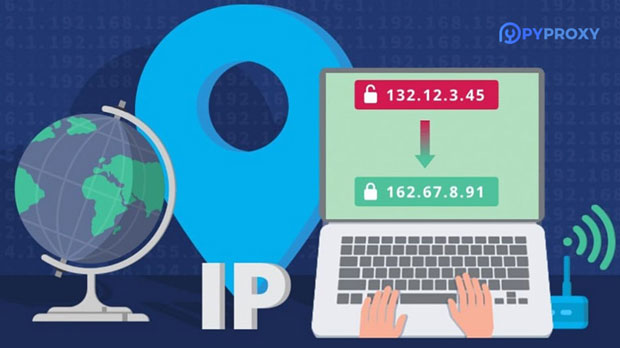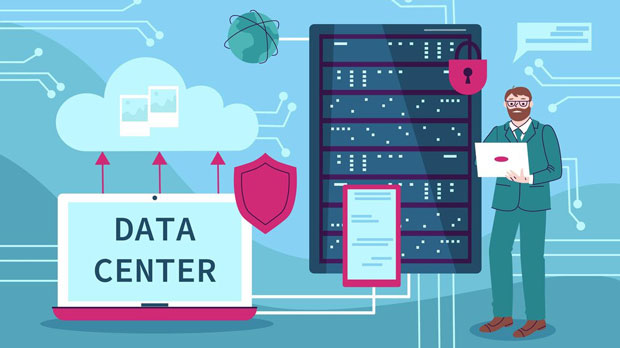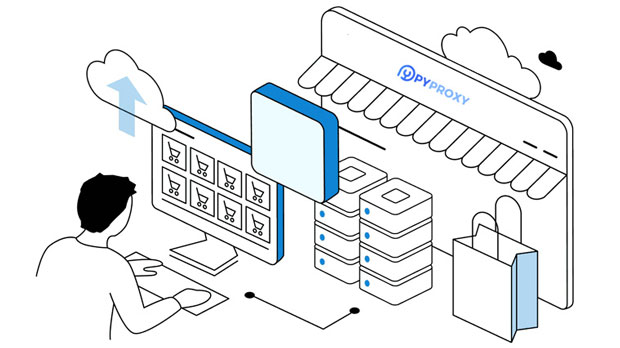In the ever-evolving digital world, web proxies have become indispensable tools for ensuring privacy, security, and accessibility. Among the many options available, PYPROXY has emerged as one of the most popular choices due to its robust features and versatility. One key question that often arises among users is whether PyProxy supports batch requests. Batch requests are crucial for scenarios where users need to handle multiple tasks simultaneously, such as web scraping, data gathering, or managing several online accounts at once. In this article, we will explore whether PyProxy is capable of handling batch requests, and discuss its potential benefits and limitations for users who require this feature. Understanding PyProxy and Its FunctionalityBefore delving into whether PyProxy supports batch requests, it's important to understand what PyProxy is and how it functions. PyProxy is a Python-based web proxy that allows users to route their internet traffic through remote servers, providing anonymity and access to restricted content. Its main features include customizable proxy rotation, IP masking, and geo-location spoofing. PyProxy is often used for tasks like web scraping, where multiple requests need to be made simultaneously to collect data efficiently. By using proxies, users can bypass rate limits, avoid IP bans, and access geographically restricted data. This makes PyProxy a popular choice for professionals in fields such as data analysis, SEO optimization, and market research.What are Batch Requests?Batch requests refer to the ability to send multiple HTTP requests at once, rather than sending them individually one by one. In many scenarios, batch processing can significantly improve efficiency and reduce the time required to complete tasks. This feature is especially important for web scraping and automation tasks, where numerous requests are needed to extract information from websites.For instance, if a user wants to scrape data from several web pages or perform actions on multiple websites at once, batch requests can help streamline the process. Instead of waiting for each individual request to be processed and completed, the user can execute multiple requests in parallel, optimizing their workflow.Does PyProxy Support Batch Requests? An In-Depth AnalysisNow that we understand what batch requests are, let's examine whether PyProxy supports this functionality. The short answer is yes, PyProxy can handle batch requests, but with some important considerations.1. Proxy Rotation and Connection Management: One of the core features of PyProxy is its ability to rotate proxies. This ensures that users can bypass rate limits and avoid detection when making multiple requests to the same website. However, when it comes to batch requests, proxy rotation becomes a critical factor. To ensure that batch requests are processed smoothly, PyProxy must be configured to use multiple proxies simultaneously. This can be done by integrating the proxy rotation feature with the batch request functionality. In Python, users can implement batch requests by leveraging libraries like `requests` or `aiohttp` in combination with PyProxy. These libraries allow users to make asynchronous requests, which means that multiple requests can be sent at the same time. When paired with PyProxy’s proxy rotation, this setup ensures that the user’s IP address remains anonymous while handling multiple requests.2. Concurrency and Performance: PyProxy supports asynchronous programming, which means that it can handle multiple requests concurrently without blocking the execution of other tasks. This is crucial for batch requests, as it enables users to send several requests simultaneously, rather than waiting for one to finish before starting the next. By using Python’s `asyncio` or `concurrent.futures`, PyProxy users can optimize the performance of batch requests. These frameworks allow users to manage a large number of connections at once, reducing the overall processing time for tasks that require multiple requests. For example, in web scraping, if a user needs to collect data from 100 different pages, using batch requests can help complete the task in a fraction of the time compared to sequential requests.3. Error Handling and Rate Limiting: When making batch requests, error handling becomes a key consideration. Web proxies like PyProxy need to handle timeouts, connection errors, and other issues that may arise during the batch process. PyProxy has built-in error handling mechanisms that help manage these problems, ensuring that the user does not lose data or face significant delays. Furthermore, rate limiting is an important aspect of batch requests. Many websites impose rate limits to prevent excessive traffic from a single user. PyProxy can help users bypass these restrictions by rotating proxies, but it’s important to ensure that the batch requests are spaced appropriately to avoid triggering rate limiting mechanisms. In some cases, users may need to implement additional logic to control the frequency of requests to prevent detection.Benefits of Using PyProxy for Batch Requests1. Increased Efficiency: Batch requests are designed to speed up processes that involve multiple tasks, and PyProxy enhances this capability by ensuring that users can send requests in parallel. Whether it's web scraping, data collection, or automation tasks, PyProxy allows users to perform batch requests efficiently, saving both time and resources.2. Scalability: PyProxy’s ability to rotate proxies and manage multiple connections makes it highly scalable for users who need to handle large volumes of requests. Users can scale their operations from small tasks to complex projects without worrying about performance degradation or IP bans.3. Improved Anonymity: Since PyProxy allows for proxy rotation, users can ensure that their requests come from different IP addresses, making it difficult for websites to track their activity. This is particularly beneficial for tasks like scraping, where anonymity is crucial to avoid being blocked or detected.Limitations and ConsiderationsWhile PyProxy offers many advantages, there are some limitations and considerations that users need to be aware of when using it for batch requests:1. Proxy Availability: The effectiveness of PyProxy depends on the availability and quality of the proxies being used. If the proxies are slow or unreliable, it can negatively impact the performance of batch requests. Users must ensure they are using high-quality proxies that can handle the volume of requests required.2. Complexity of Setup: Setting up PyProxy for batch requests may require some technical knowledge, particularly in terms of configuring proxy rotation and handling asynchronous requests. Users who are not familiar with Python programming may find the setup process challenging.3. Legal and Ethical Considerations: Web scraping and batch requests can sometimes run into legal and ethical issues, especially when scraping data from websites without permission. Users should always be mindful of the terms of service of the websites they are interacting with and ensure that their actions are compliant with relevant laws and regulations.Conclusion: Can PyProxy Handle Batch Requests? In conclusion, PyProxy does indeed support batch requests, provided that it is properly configured with proxy rotation and asynchronous request handling. By leveraging Python libraries such as `requests`, `aiohttp`, and `asyncio`, users can efficiently handle multiple requests simultaneously, improving the speed and performance of tasks like web scraping, data collection, and automation.While PyProxy offers many benefits, users should be aware of the potential challenges, such as proxy reliability, setup complexity, and legal considerations. Nevertheless, for those who require batch request functionality, PyProxy is a powerful tool that can significantly streamline and enhance web-based tasks.
Oct 17, 2025


































































